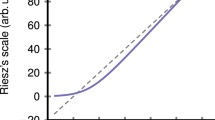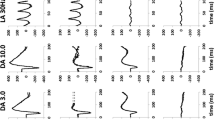Abstract.
Nerve cell signals are different in form from the stimuli that evoke them and they exhibit complex spatio-temporal characteristics. This defines a neural coding problem which is addressed by two current theories: Multiple Meaning Theory holds that neural signals contain patterns that make statements about combinations of stimulus properties; the Task Dependence Hypothesis suggests that different features of identical neural signals mediate performance in different behavioral tasks. These coding issues were addressed by investigating the representation of sensory information in the distal nervous system after transduction of visual stimuli into bio-electric signals. The objects of study were light-evoked neural responses which had been intracellularly recorded from single retinula (photoreceptor) cells in Limulus lateral eyes. The efficacies with which sensory information was represented by various candidate neural codes were calculated using receiver operating characteristic (ROC) analyses to provide objective indices. The specific visual problem under investigation was discrimination between light flashes whose intensities differed by a very small amount. A wide range of light adaptation states and relative stimulus intensities were explored. Extremely stringent data quality standards were applied which restricted the investigation to cells whose potentials did not exhibit any statistically significant drift during the hours required for data collection. Seven cellular characterizations were simultaneously monitored to detect drift in a given cell’s potentials; these characterizations included the value of the membrane potential and the values of six candidate codes. These codes were: the area under the light-evoked receptor potential (RP), the mean value of the RP, the peak height of the RP, the slope of the onset of the RP, the duration required for the RP to drop from its peak by a given amount, and the duration required for the RP to end. The results were: (1) Light adaptation increases efficacy. (2) Thus, light adaptation trades sensitivity for acuity (as characterized by ROC discriminations). (3) Increasing relative light flash intensity also increases efficacy. (4) The efficacies of the various codes are significantly different and fall in the following order: area?peak=mean?duration-end=slope= duration-drop. These findings further demonstrate that arbitrary characterizations of stimulus-response relationships are very likely to be incomplete. They particularly indicate that many commonly used and quite conventional neural analysis strategies may substantially underestimate system performance.
Similar content being viewed by others
Author information
Authors and Affiliations
Additional information
Received: 21 August 1995/Accepted in revised form: 19 April 1996
Rights and permissions
About this article
Cite this article
Cheng, Z., Wasserman, G. Receiver operating characteristic (ROC) analysis of neural code efficacies . Biol Cybern 75, 93–103 (1996). https://doi.org/10.1007/s004220050277
Issue Date:
DOI: https://doi.org/10.1007/s004220050277




